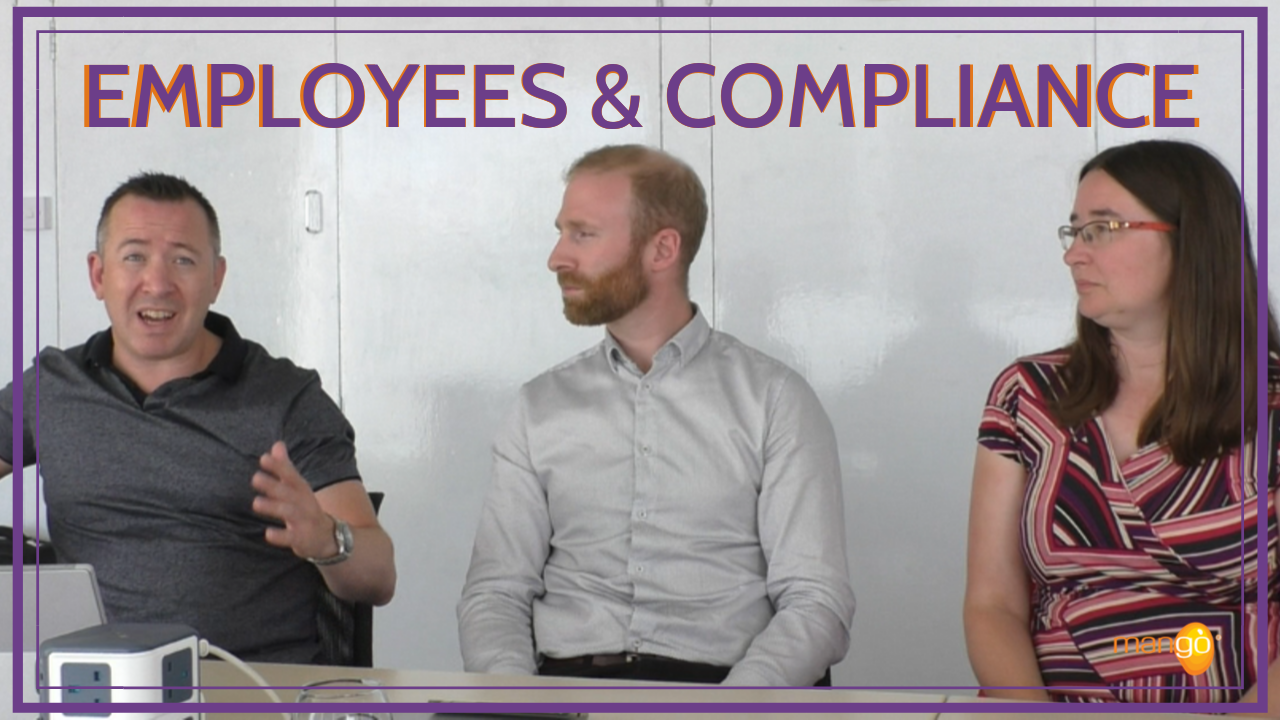Do you know who is responsible for what?
Having clear definitions of authority and responsibility are rare – especially in small & midsize enterprises (SMEs).
Such a fundamental weakness can of course result in far-reaching problems but no more so than in the area of QHSE compliance.
In fact, achieving an acceptable level of compliance maturity is near-impossible without clear-as-crystal definitions of authority and responsibility.

First things first
First, let’s get our definitions sorted…
Whilst authority is the power to give orders/instructions, responsibility is the obligation to execute those orders.
Authority and responsibility therefore go hand-in-hand but there needs to be absolute clarity as to who does what.
The trouble is that lots of things can muddy the waters where authority and responsibility are concerned. For a start you’ve got multiple places where authority and responsibility are defined; for example:
- Positions Descriptions
- Delegation Manuals
- Individual Employee Agreements
- Single Procedures
- Multiple Procedures
- Standard Operating Procedures
- Forms
- Checklists
- Flowcharts of processes
Next, throw in some extra variables like the culture of the business (command and control vs team responsibility) and the difference between individuals (the fly-by-the-seat-of-your-pants style of management vs tightly-rule-bound-control-freakery, for example).
Then there’s the different leadership styles, such as those outlined in the Blanchard situational leadership model. This model uses four quadrants to determine a leader’s style; namely: directing, coaching, supporting and delegating. Interestingly, the style that each leader applies in any given situation often depends on an individual’s competency and commitment.
And finally we have the everyday pressures of meeting customer orders and getting product out. The bottom line can be a hard taskmaster – and often results in risky shortcuts being taken.
With so many variables, it’s no wonder that many organisations struggle to provide a definitive answer to the simple question: who is responsibility for what?
The net result isn’t just a loss of efficiency (though that’s bad enough) – the key issue is, not having authority and responsibility clearly defined can bring an organisation to its knees. It can cause the most dreadful environmental damage, and it can expose your employees, customers and the wider public to terrible harm.
Authority and responsibility gone wrong
Unfortunately, in New Zealand alone we have two recent examples (both currently commanding the news headlines) that highlight the awful cost of not clearly defining authority and responsibility – the Fonterra botulism scare and the Pike River tragedy.
The independent inquiry into the Fonterra scare found that “the Board should accept greater responsibility for developing and maintaining relationships at the most senior levels of Fonterra’s external stakeholders, including in government and media within and outside New Zealand”. The scare cost Fonterra hundreds of millions of dollars, inestimable damage to their reputation and a court case brought by a former customer.
The report of the Pike River Royal Commission used the word “responsibility” 20 times in its recommendations. A shocking lack of authority and responsibility led to the deaths of 29 men, ripped apart a community and destroyed the already-shaky company.
They key point is that authority and responsibility should never be just niceties (as Deming said: “Divided responsibility means that no one is responsible”).
An ad-hoc approach just isn’t good enough. We all have a duty to our employees, the public, the environment – and each other - to take authority and responsibility seriously. Unfortunately, this is counter to the “she’ll be right” attitude of many SMEs – especially in New Zealand. But we can change that – starting right now.
Here’s what I suggest:
- Write down who has the authority to give orders, and who has the responsibility to carry out those orders. Don’t rely on word of mouth.
- Within that, create an organisational chart clearly showing the levels of authority.
- Make sure the authorities and responsibilities are simple to read and understand.
- Create an all-encompassing document that defines both authorities and responsibilities for the whole management system. Then ensure it links to all other documents in the management system and doesn’t contradict policies or procedures.
- Encourage involvement from all stakeholders and get buy-in from those concerned.
- Have the document signed-off by the Board/Management Team.
- Continually audit the document to ensure it is kept current.
The takeaway
Clarity is everything. Don’t put up with - or create - muddy waters.
The last word should go to Deming (I’ll quote him till the cows come home because the man was extraordinarily good at getting to the heart of the issue)…
“Everybody doing his best is not the answer. It is first necessary that people know what to do”.
.png?width=200&height=51&name=image%20(2).png)



